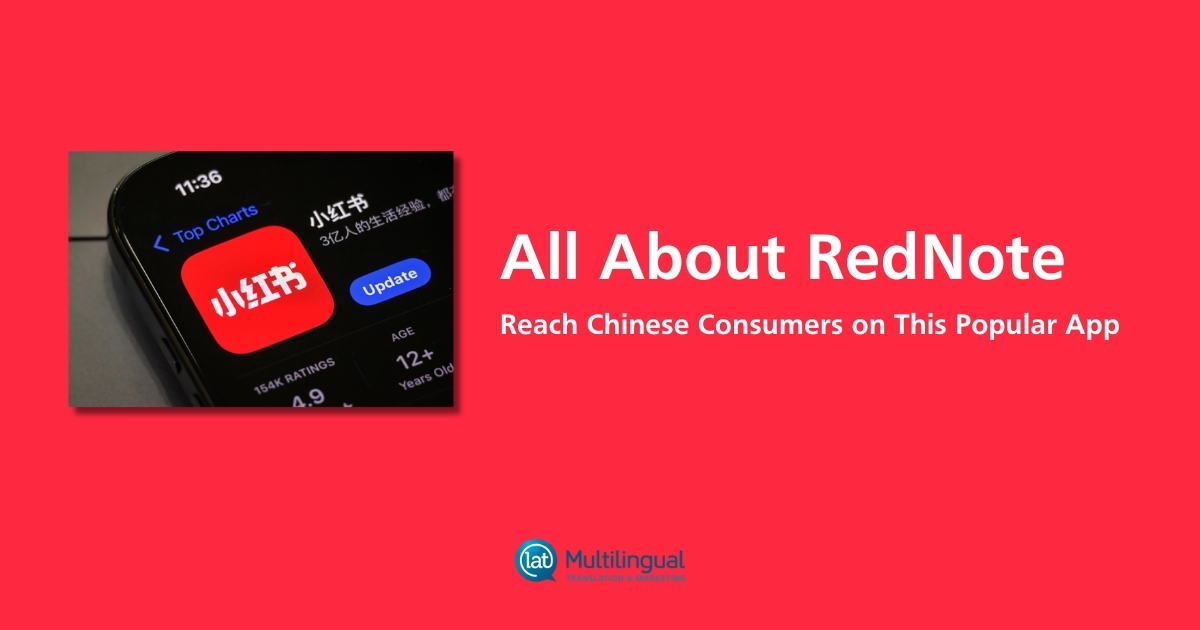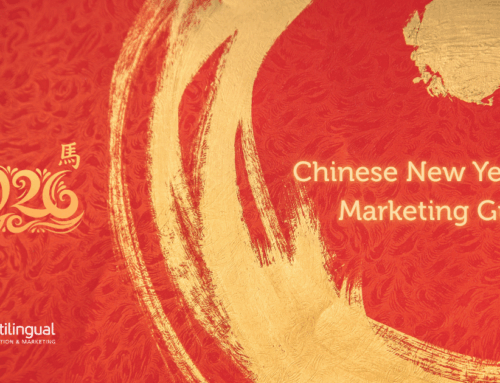Looking for a shop or restaurant with good reviews in your area? Chances are you will start your search on Google. But for Chinese customers, that’s not the case. Why? Google has been blocked in China for over a decade. Chinese content on Google is often outdated and limited while other options, such as RedNote, offer much fresher and more reliable information.
RedNote, also known as Xiaohongshu or Little Red Book, is a powerful platform that many Chinese consumers use as their primary search tool. Even if they speak English, Chinese consumers often still prefer to search for information in their own language, making it a better fit than Google.
We highly recommend taking advantage of RedNote to connect with Chinese consumers in North America. Below, we’ll share why Chinese users have migrated to RedNote, the basic features of the platform, and how you can leverage it to grow your business.
What Happened to WeChat?
You might already be familiar with WeChat, the popular Chinese app that launched in 2011. By 2018, it was the world’s largest app, with over 1 billion monthly active users. Many companies leveraged WeChat’s popularity to reach Chinese consumers, even here in Canada.
If your organization has a WeChat account, you might have noticed a drop in engagement recently. Where are your followers going? If they’re looking for great deals and attractive brands, your customers are more likely to search on RedNote. WeChat is still popular and Chinese people everywhere rely on it for daily messaging, checking news, making payments, and more. However, it is a ‘closed’ platform where users need to find and follow an account to see its content; whereas RedNote is an open platform – which can be viewed without the need to be a follower.
How To Measure Success on RedNote
If one doesn’t need to “follow” an account to view its content, you might ask: how do I know my account is successful? What are my conversions?
While follower growth is a major indicator of brand loyalty and of the relevance of your content, several other key metrics need to be taken into account when evaluating the success of your account on RedNote.
Here are 5 other key measures that should be evaluated regularly, to make sure everything is on track:
1. Views
Views or impressions refer to the number of times your content is shown to interested users based on RedNote’s algorithm. High views suggest that your content is welcomed by a wide audience, effectively expanding awareness.
2. Engagement
Likes, comments, shares, and saves (or collections) are key indicators of the way your audience interacts with your content. A high engagement rate shows that your content is not only being seen but is engaging and triggering conversation among users.
3. Traffic to External Platforms
If your RedNote account is verified and registered on the advertising platform ‘Spotlight’, you will be able to add a link to an external landing page (a shopping page on your website for example). This way, referral traffic can help measure direct conversions from RedNote. Tools and statistics available on Spotlight will allow you to get more insights and measure your content’s impact on sales, reservations or enquiries.
4. Comments & Private Messaging
Comments and messages are often excellent sales leads. They create opportunities for direct engagement with your customers.
5. Social Listening
In addition to the above, managing your RedNote account should include keeping an eye on reviews and responding promptly, as you would on any social media account.
What You Should Know About RedNote: The Basics
RedNote is similar to Instagram: users can share videos and images with text, like and share posts, and save posts for later. They can also make purchases directly from the app, leveraging RedNote’s highly personalized feed.
It thrives on peer-to-peer content like authentic reviews and tips and supports both individual and business accounts. There’s a lot of retail, lifestyle, and travel content, but also a wide variety of other topics.
Here are a few other key things to know about RedNote:
Peer-driven content: RedNote’s user-focused content gives it a trustworthy community vibe. There are many key opinion leaders (KOLs) on RED that brands can collaborate with to create engaging word-of-mouth promotions.
Young audience: 33% of RedNote users were born after 1990, making it a great way to reach a younger audience, with considerable purchasing power.
Easy to go viral: Since so many people rely heavily on RedNote as a search engine, it’s easier to go viral than it is on many social media platforms. Brands can engage by replying to comments and messages, but setting aside a budget for advertising is also important.
Registered accounts enjoy special features: Like Facebook, businesses can create a registered account to tap into special features like “Spotlight,” the app’s advertising platform.
Reviews-driven: People go to RedNote to see brand reviews from people they trust. Reviews are mostly organic, but you can collaborate with KOLs to create sponsored content and broaden your reach.
Canadian Brands on RedNote
Here in Canada, many companies and organizations are already connecting with Chinese locals on RedNote and seeing great success. These brands are building a loyal following by reaching out directly to this growing audience.
Here are a few examples:
Canada Goose is a retail and fashion brand that has attracted 66K followers on RedNote since they started posting in 2021. They post about new products, and fashion advice, and also use RedNote for seasonal promotions. There are lots of positive comments about the products and questions about what the model is wearing.
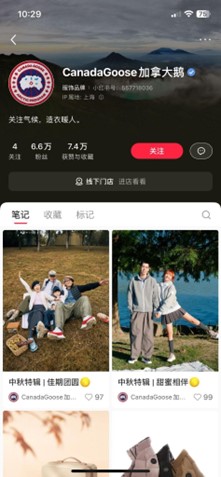
Lululemon is another Canadian fashion brand with 170K followers. They’ve been on RedNote since 2018, and their approach and reception are similar to that of Canada Goose, with lots of images and videos featuring models sporting their athletic wear.
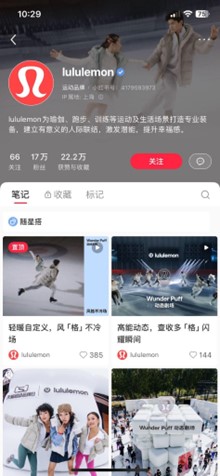
Roots, also a Canadian fashion brand, has been on RedNote since 2022. They’ve gained 4,751 followers with posts about their fashion and lifestyle products.
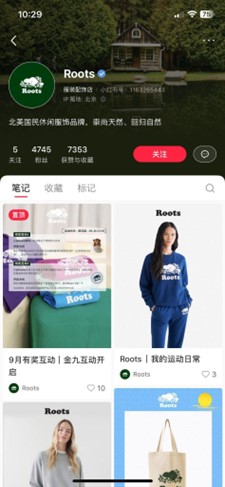
T&T Supermarket is a Canadian chain that specializes in Asian groceries. They’ve amassed 15K followers since 2020, with posts about new stores, seasonal items, recipes, and holiday campaigns. Their followers ask about product availability and store information, and post reviews on the products they sell.

Mission Hill Family Estate Winery is a BC winery. Their RedNote account was set up in 2021 and has since gained 1,889 followers. They post content about food and wine pairing suggestions, tips about wine, lifestyle and travel tips, and holiday and promotional campaigns. Followers ask them about wine, reservations for tastings, and information about the winery.
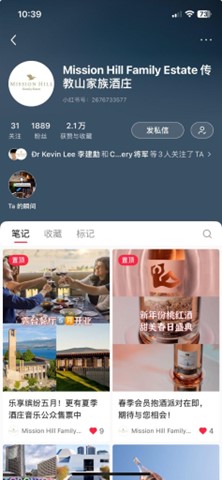
MAC Cosmetics is a Canadian beauty and skincare brand with 339K followers. Since 2019, they’ve been creating new product posts, makeup tutorial videos, and holiday campaigns. They also collaborate with KOLs to boost their following on RedNote. Their audience asks them about product availability, product information, reviews and more.
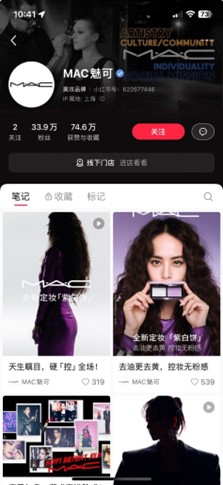
Destination Canada is Canada’s travel and tourism marketing organization. Their account was created this year and already has 1,219 followers. They use RedNote to recommend attractions, travel ideas, accommodations, fun destinations for the family, outdoor activities, and wildlife. Their audience asks them about travel tips and posts reviews of attractions.
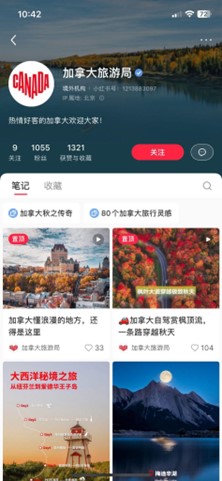
Jamieson Vitamins is a health and wellness brand with 21k followers on RedNote since launching their account in 2023. They post product information, and healthcare tips, and collaborate with KOLs in addition to creating holiday campaigns. Questions and comments are mainly about products, recommended daily intake of vitamins, and reviews of their products.
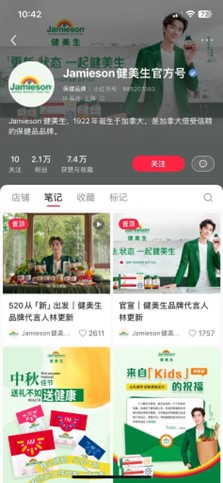
The University of British Columbia has been on RedNote since 2023. They’ve grown their follower count to 8,804 with content about graduation, events, transportation, food, campus life, stores, and holidays. They also collaborate with brands like Lululemon, which sells products in the university bookstore. Their audience asks them about programs, homestay, summer camp, eligibility and enrollment, scholarships, as well as a variety of other topics related to campus life.
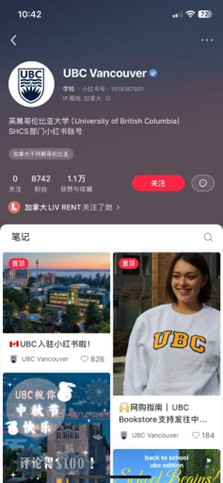
There are many more North American brands with an official account on RedNote. Yours might even have a RedNote presence without you being aware of it, since people may have posted reviews of your brand on the platform. Having a business account is an important way to regain control of the narrative surrounding your brand on RedNote.
4 Tips to Get the Most out of RedNote
At LAT Multilingual, our Chinese marketing team can help you succeed on RedNote. We also create marketing campaigns, find KOLs to collaborate with, and help you engage with Chinese customers. If you aren’t on RedNote yet, we can help!
Here are 4 expert tips to help you succeed on RedNote:
- Register an official business account. You’ll need to go through a registration process, but the business account features are worth it. You’ll get a blue “verified” badge and access to advertising tools and detailed analytics.
- Advertise. Over the past two years, Spotlight ads have become essential for bringing in traffic. We recommend setting aside a monthly budget for this tool.
- Be authentic. Focus on authentic content and collaborations, especially with eye-catching images and videos. Short-form video is becoming increasingly popular on RedNote.
- Culturally adapt your content. Don’t just translate your English campaigns. Have us adapt them to your Chinese audience. For example, you could offer promotions around holidays like the Mid-Autumn Festival and Lunar New Year.
Want to stay ahead? Keep an eye on trending social platforms. Back in 2013, the ‘hot’ social platform to be on was Weibo, and many brands were adopting innovative strategies to engage with their clients. We then saw the growth of WeChat a few years later, and now RedNote. In managing Chinese social accounts for our clients, we make sure to keep an ear to the ground and keep our clients ahead. For example, when we began managing Chinese social accounts for Vancouver International Airport in 2016, we started with Weibo, then added WeChat when its popularity surged, but now their main focus is RedNote. In less than two years, YVR has gained over 11K followers on RedNote!
To sum up, RedNote is ideal for brand awareness and increasing sales with Chinese residents here in Canada. With user-generated content, you can help your brand build trust. Furthermore, the app’s focus on retail and experience sharing is an excellent match for luxury brands.

